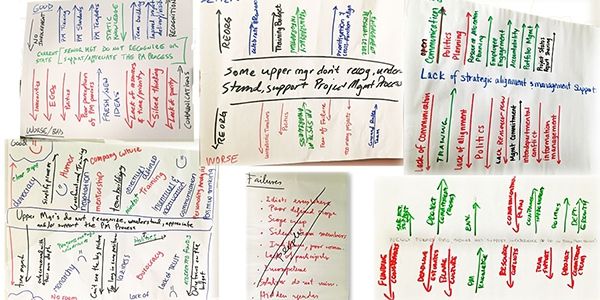Remedies for Failed Project Management
Project management can fail for numerous reasons, but the consequences are always the same – wasted time and resources, dissatisfied clients, and a devastating blow to your reputation as a project manager.
Nevertheless, failed projects provide valuable opportunities for the professional growth and development. Also, maybe it is a sign that you should start using some project tracking software.
If you have recently experienced a failed project or you are just wondering what to do if a project fails. Then read this article as it packs information that you may find useful. We have provided few actions that you can take once the project fails in order to prevent it from happening in the future.
Assess the Situation
Projects management doesn’t fail on its own. It includes certain actions from managers and other team members side as well who are involved in a project and caused an impact in the progress of a project. Before you can decide which remedy to apply, you have to identify the cause for project management failure. You can start by examining each stage that took place before the failure occurred. If you don’t have project phases and the paperwork to track past progress then there are chances to notice the first sign of getting an error due to poor project planning, structure, and mismanagement.
If you don’t have a good project plan, there is no point to wonder why your project failed. A project plan serves as a roadmap for you and your team members that they must follow. Without it, you can easily get lost in everyday tasks and dependencies and lose track of assets and time. In such cases, it is really important that an individual esp. A project manager should work on the project planning skills.
It may be valuable for you to know that most sophisticated, simple project management software come with project management templates that are easy and ready to use. You can even make your own plan and store it for future reference. In just a few clicks, you will be able to invite different people and make them start working on various tasks by ensuring defined deadlines and following work breakdown structure.
Remedy for Losing Crucial Pieces of Information
Paperwork and project management have to work well, as they are cogs of a well-oiled machine. The paperwork is of the utmost importance for a project management success. As the project goes on, these papers may get lost and you may be deprived of very important information which can be crucial for management efforts. This happens very often in organizations who use email as a document storing system.
Maybe you are not familiar with cloud technology and simple project management software which is a cloud based tool for handling different projects. The main benefit of using cloud based technology comes from centralized storage. All of the documentation is stored in one place. With the ability to track every change and to appoint access rights to every person in your team. Hence, you will never experience a project failure due to the lost paperwork.
[widget id=”custom_html-68″]
Remedy for Poor Communication
Poor communication has taken down empires, so don’t get surprised if your project management failed because you didn’t see the SMS from your employee. The one who notified you that he is not going to finish his task, who was actually the first member of the task dependency chain assigned to a task at topmost priority. Then, remember the time has come to leverage new technologies and to enable your team to communicate efficiently.
There are numerous tools online that can bring your team together on one communication channel. Even project management software solutions have a communication feature which allows managers to communicate with their teams in the real time. Notifications systems are utilized so that nobody misses an important message regarding the task they are working on.
Since the technology is cloud based and mobile ready, you can manage the projects wherever you are and from any device at any location just by using your hands.
Remedy for Inefficient Project Tracking
In order to succeed as a project manager, you have to be able to track the project as it progresses in real time. Inefficient project tracking limits your reaction time, which may have devastating effects on your project. With the ability to track the project with just one glance, you will become more agile and nothing will surprise you.
Today, it is almost impossible to consider managing a project without project tracking software at your disposal. Project tracking tools have a very simple user interface which utilizes charts, colors, progress bars, and time tracking tools to help project, task, and team managers remain as efficient as possible.
Any unplanned change which occurs during project progression can easily be seen and addressed immediately by using project management software so the project remains on the track. Furthermore, you will have access to the history of project management by archiving it. So, you may come back and address those issues which you don’t want to repeat again.
Remedy for Poor Contingency Plans
On very rare occasions, the project will go smoothly, as planned. A project plan is very important for project management success, but contingency plans are also a must have. This is why you should always have a sit down with your managers and examine your project and every task independently, and ask as many “What if” questions, and then provide as many “Then I will” answers to them.
Look at contingency plans as project management’s insurance plans. The more detailed, the better. When you are backed up with all that information and actionable knowledge, you won’t experience panic when something goes wrong. In the end, remember, proactive project managers have higher project success rates than reactive ones.
As you can see, failed projects are not such a bad thing. So, if you are cooperating with a reasonable client, you can always provide a remedy for it and bring the project back on its feet. Anyway, now you already know what can be done in the scenarios we have covered in this article, so now I guess you easily find a solution for all of them. If this topic interests you, feel free to look for more information on popular project management forums where managers share their experience first hand.



















